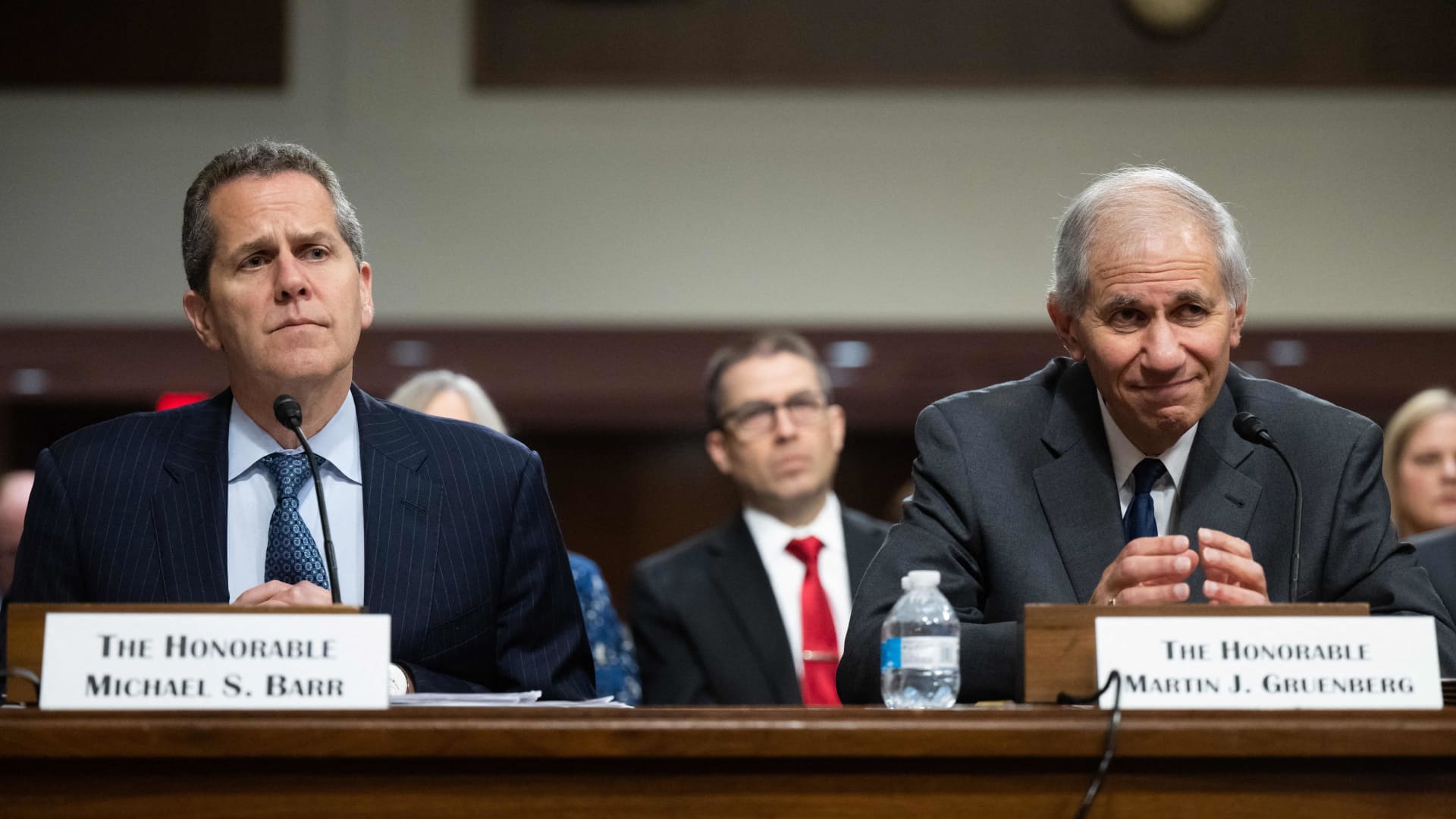Michael Barr (L), Vice Chair for Supervision at the Federal Reserve and Martin Gruenberg, Chair of the Federal Deposit Insurance Corporation (FDIC), testify about recent bank failures during a US Senate Committee on Banking, House and Urban Affairs hearing on Capitol Hill in Washington, DC, May 18, 2023. (Photo by SAUL LOEB / AFP) (Photo by SAUL LOEB/AFP via Getty Images)
Saul Loeb | Afp | Getty Images
U.S. regulators unveiled a comprehensive set of proposed changes to banks’ capital requirements on Thursday. The changes aim to address evolving international standards and the recent regional banking crisis, while also improving the accuracy and consistency of regulation. The notice from the Federal Reserve, Office of the Comptroller of the Currency, and the Federal Deposit Insurance Corp states that the proposed rules will revise regulations related to risky activities such as lending, trading, valuing derivatives, and operational risk.
These proposed changes have been long anticipated by banks and seek to tighten regulation in the industry following the 2008 financial crisis and the recent upheaval in regional lenders. The rules incorporate elements of the Basel III regulations, which were developed after the 2008 crisis and have been gradually implemented over the years.
The changes will generally increase the capital requirements for banks, depending on their risk profile. While all banks with at least $100 billion in assets will be affected, the largest and most complex banks are expected to face the greatest impact. The regulators estimate that the proposed improvements will lead to a 16% increase in common equity tier 1 capital requirements. Common equity tier 1 capital levels are a measure of an institution’s financial strength and its ability to withstand recessions or trading losses.
Long phase-in period
The regulators state that most banks already meet the capital requirements. Banks will have until July 2028 to fully comply with the changes. In response to the failure of Silicon Valley Bank in March, the proposal will require more banks to include unrealized losses and gains from certain securities in their capital ratios, as well as comply with additional leverage and capital rules.
This effectively eliminates a regulatory loophole that regional banks had previously taken advantage of. While larger firms with at least $250 billion in assets had to include unrealized losses and gains on securities in their capital ratios, a carve-out was granted to regional banks in 2019. This loophole had allowed the deterioration in SVB’s balance sheet to go unnoticed until investors and customers sparked a deposit exodus in March.
Higher standards
The proposed changes would also require banks with at least $100 billion in assets to replace internal models for lending and operational risk with standardized requirements. Banks would also have to use two methods to calculate the riskiness of their activities, and adhere to the higher of the two for capital purposes.
Acting OCC head Michael Hsu stated, “Today’s banking system has more large and complex banks than ever to support our dynamic economy. Our capital requirements need to be calibrated to this reality, providing strong foundations for large banks to be resilient to a wide range of stresses today and into the future.”
The regulators are inviting commentary on their proposal until November 30. Banks and their interest groups are expected to push back against some of the new rules, arguing that they will raise prices for customers and push more activity into the so-called shadow banking sector.
Trade groups, including the American Bankers Association, the Consumer Bankers Association, and the Financial Services Forum, have already issued statements questioning the rationale behind the stricter capital requirements. Kevin Fromer, CEO of the Financial Services Forum, stated, “There is no justification for significant increases in capital at the largest U.S. banks, and no other jurisdiction is likely to adopt the approach proposed today, which will only increase the significant disparity that already exists between U.S. and foreign bank capital requirements. Regulators and other policymakers should carefully consider the harmful economic impact of this proposal.”
Denial of responsibility! VigourTimes is an automatic aggregator of Global media. In each content, the hyperlink to the primary source is specified. All trademarks belong to their rightful owners, and all materials to their authors. For any complaint, please reach us at – [email protected]. We will take necessary action within 24 hours.


